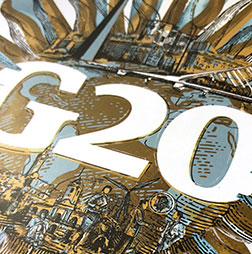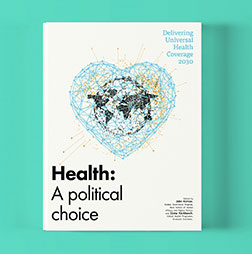Belief in science has eroded, but we can rebuild it
In the winter of 2025, measles, a disease that had been largely eliminated in North America for several decades, started to make a resurgence. Despite the wide availability of a safe, effective and well-tolerated vaccine, millions of people chose not to vaccinate their children against this highly contagious and deadly disease.
Why might this be? After all, the science is incredibly clear. Surely if we just explain the logic to people, they will be eager to get themselves and their children vaccinated.
The problem with this solution is that the public has lost trust in scientists, with many people seeing them as tools of the elite, as part of a hated group or even as bumbling, incompetent fools. And so, convincing billions of people to follow public health recommendations is more complicated than simply conveying scientific findings. We must instead understand why there is such widespread anti-science sentiment, so that we can develop the means to address it and improve the health of countless individuals and communities.
Some of the most prominent reasons for anti-science sentiment include lack of trust in scientists and other institutions, deeply entrenched values and beliefs that conflict with scientific findings, and a view that particular domains are incompatible with science. All these can lead to harmful societal consequences, such as individuals rejecting public health guidelines – refusing to get vaccinated and ignoring mask mandates; not engaging with preventive health measures such as wearing sunscreen or condoms or getting cancer screenings; and even spreading misinformation about the use of alternative treatments that range from ineffective to dangerous.
Breakdown in trust of scientists and other institutions
Perhaps the most apparent source for anti-science sentiment is the breakdown of trust in scientific institutions over the last several years. Although scientists have historically been viewed as objective, trusted experts, this has shifted over the last decade. Scientists are generally stereotyped as cold and unfeeling, which reduces trust in them and their recommendations. This lack of trust in scientists has been coupled with a general distrust in public institutions, such as government and education. Those in political power have exacerbated this distrust in scientists by deliberately undermining their credibility, asserting that scientists have financial interests in health treatments and repeating false claims about critical treatments such as vaccines.
To combat this, scientists need to engage directly with the public, so they can reclaim how they (and their findings) are portrayed. Scientists ought to have a greater public presence so they can communicate that they are, in fact, selfless, warm people who are trying to develop the best treatments, technologies and practices to improve public health.
When science goes against values and beliefs
Even if scientists are viewed as credible, their recommendations will be met with resistance if they are seen as contradicting cherished values, such as religious beliefs. Many religious individuals dismiss scientists as being biased against their religion’s values. Although not inherently contradictory, many religious people view scientists as being opposed to religion. Indeed, some scientific findings do brush up against some religious beliefs, such as creationism versus evolution. When people see their beliefs as stemming from moral conviction, they can be difficult to persuade.
Of course, science and religion are not inherently contradictory, but rather reflect two different approaches to acquiring knowledge. Science requires testing a hypothesis and obtaining evidence, whereas religion relies on faith. Importantly, most scientific findings are not sacrilegious. There is nothing heretical about vaccination, sunscreen or pain killers, but nonetheless the perception that religion and science conflict persists. The remedy for this is to meet people where they are, so to speak, and tailor scientific messages to people’s values. Most public health messaging is one size fits all, a weak strategy when there is such wide variance in the reason for public health resistance. Public health messaging should instead be framed to align with cherished values, such as arguing that vaccination helps preserve the sanctity of life.
Science seen as overreaching
There are, of course, some instances of even the best communicator struggling because the use of science is seen as simply inappropriate. Conversely, many people have a bias towards natural treatments and products, preferring those over ‘synthetic’ (or scientifically formulated) options. Together, these contribute to perceptions of scientific overreach. For example, when science is used to clone celebrities’ dogs or develop elaborate cosmetic procedures, most people would agree this qualifies as overreach. There are also more mundane domains where people see science as incompatible. People see science as having no place in the making of indulgent foods or personal care products, and its use in these domains can make people uncomfortable.
To address this discomfort, we can educate people about the need for science, even where it may seem incompatible. In one example, an intervention involving participants reading that baking requires chemistry was effective at increasing interest in scientifically formulated baked goods.
Taken together, such findings suggest that by altering how scientists are portrayed and how findings and recommendations are communicated, we can work to rebuild trust in science to improve public health outcomes.












